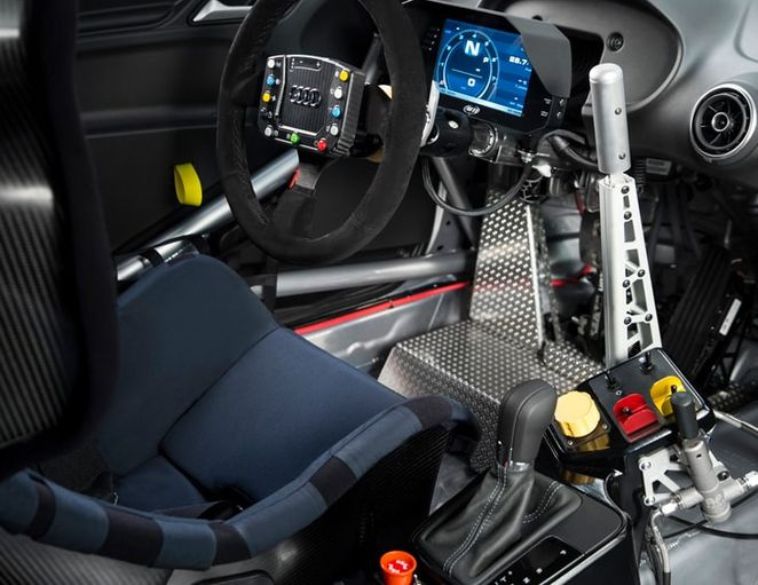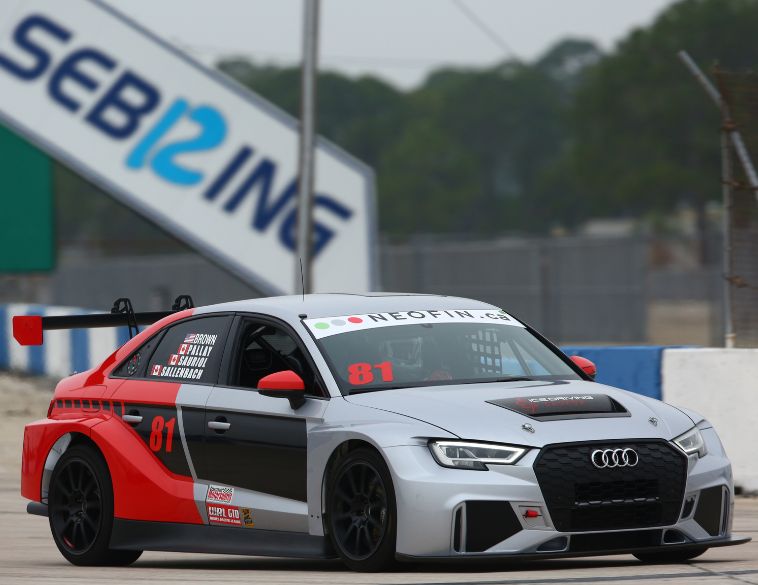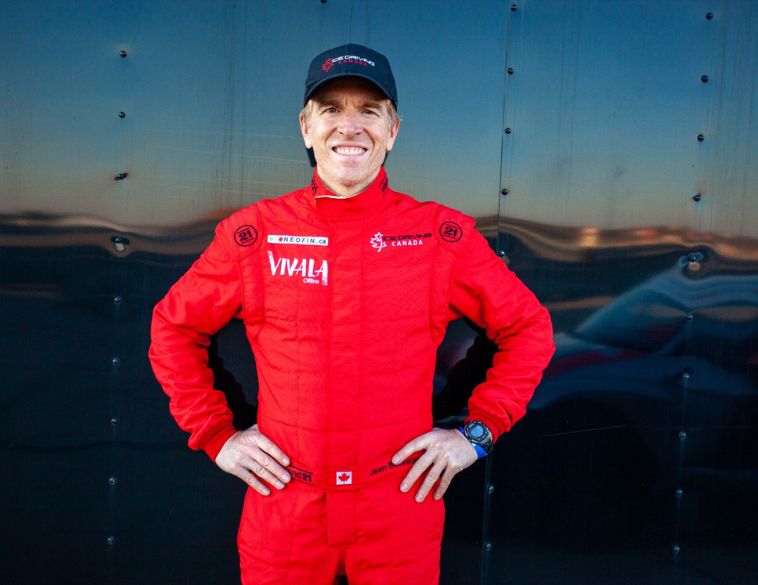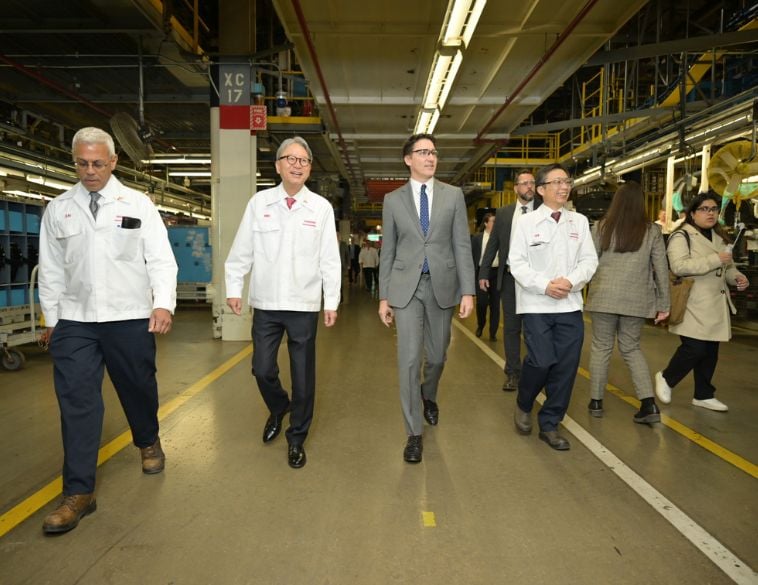Is the race to automate and electrify transport sounding the death knell for a certain vision of the automobile, where driving pleasure took precedence over utility? An interview with professional driver and trainer Jean-Sébastien Sauriol.
Karting, single-seater formulas, endurance racing: Jean-Sébastien Sauriol has completed numerous circuits on every continent since the start of his racing career. Since 2009, he has also become one of the few Canadian trainers to coach police forces, racers and private individuals. The President of IDC Preventive Driving has closely followed the technological evolution of the automotive world.
“I learned to drive manual gearboxes,” he says. “In the 1980s, my first cars were R5s and R14s, and my racing models were also manuals. Then, in the 1990s, semi-automatic gearboxes appeared, later to be replaced by fully automatic ones. The cockpits of today’s racing cars don’t even have clutches anymore. A lot has changed.”
The pleasure of driving is lost
The technological advances that have marked motorsport have obviously had an impact on the road vehicle market. The choice of new cars with manual gearboxes is becoming increasingly limited, even for manufacturers who evoke sporty driving. The legendary Porsche 911, for example, is now much less popular than the Cayenne and Macan SUVs.
Sauriol sees this evolution as a change in mentality: “I’m not against technological progress. It’s great to be able to drive 400 or 500 kilometers without making any noise, in a car with good road characteristics. But we don’t see our cars the same way we used to.”
The driver remembers that when he was 16, like most young people of his time, he ran to the SAAQ to get his temporary license. “There was a promise of freedom and thrills associated with driving,” he says. “All I wanted to do was get out on the road, do roadtrips, feel my hair blow in the wind on a winding road. It was pure pleasure.”
It’s a pleasure that doesn’t seem to be shared by today’s younger generations, who learn to drive much later and see the car more as a commodity. This is true of everyday drivers, but also, Sauriol tells us, of the young police officers who take his specialized driving courses. “It’s too bad that fewer and fewer people want to discover the pleasure of driving,” says the expert.

Aseptic, expensive cars
There are, of course, benefits to be gained from incorporating the latest technologies into vehicles. Less fuel consumption, greater comfort and safety are good selling points. “But the car guy in me has a hard time understanding why so much is bet on big screens, cell phone charging, wifi connections or safety sensors,” admits Jean-Sébastien Sauriol. “With all that, you can’t feel the road anymore, and you’re no longer in control of your car.”
And yet it’s these accessory elements that many automakers are now emphasizing in their models and advertising. Just think of the ads by Marilou Wolfe for Chevrolet, or Marilou Bourdon (3 fois par jour foodie) for Hyundai’s Wah. The new dream is for vehicles that are fully equipped, comfortable, trendy, equipped with the latest technology and environmentally friendly. “And aseptic,” adds Mr. Sauriol, “because they evacuate some or all of the pleasure of driving as such.”
The pilot is aware that major environmental and economic issues underlie the automakers’ approach. But the government’s objective of converting 20% of the Canadian fleet to electric vehicles by 2030 is, in his view, very ambitious, as is the democratization of these new models.
“I’m a bit skeptical about that,” he says, “if only because I don’t think these electric cars are affordable. For accessible models like the Chevrolet Bolt to be withdrawn from the market because they don’t make enough money for the manufacturer, and for people to have to invest 60, 70 or even $80,000 for an electric car, is contrary to the stated objectives.”
The revenge of vintage
Despite these economic considerations, we’re still heading for the advent of electric and, very soon, autonomous automobiles. So, is the pleasure of driving doomed to an imminent death? Jean-Sébastien Sauriol doesn’t think so.
The expert notes that driving clubs, whose members take part in lapping days (sporty driving on closed circuits), have been gaining followers in recent years. This niche, made up of millions of drivers around the world, refuses to see iconic models such as the Porsche 911 GT3 disappear, as it was almost withdrawn from the market before being reinstated, due to the outcry caused by the manufacturer’s announcement.
Sauriol is also amazed by the incredible craze for antique cars and all things vintage at the moment. “Vintage is becoming increasingly popular. Furniture, clothes, etc. You know, the pleasure of driving is visceral. Our car is one of the last places where we can be alone and connect with the road. And the sensations and emotions you experience behind the wheel are incomparable. So I believe there will always be a place for it in our society.”
Bill Danner, a 76-year-old “young” driver whom Jean-Sébastien Sauriol trained in 2023 for the Champcar Endurance Series at the famous Sebring circuit in Florida, and the Nissan Z commercial in which Karine Vanasse uses a manual gearbox, are certainly not going to prove us wrong.




